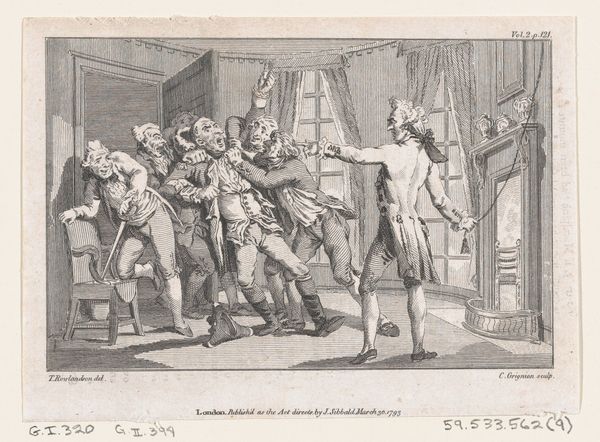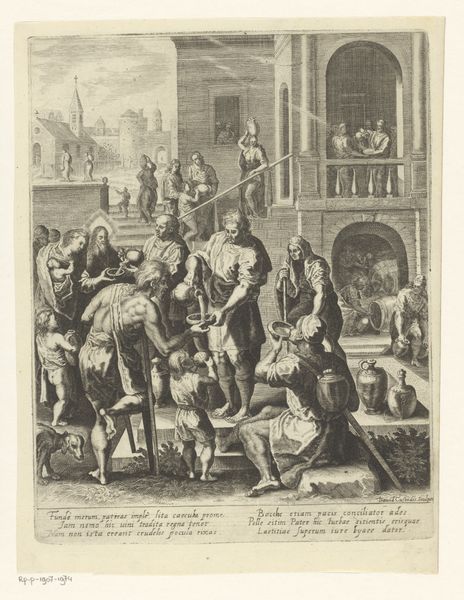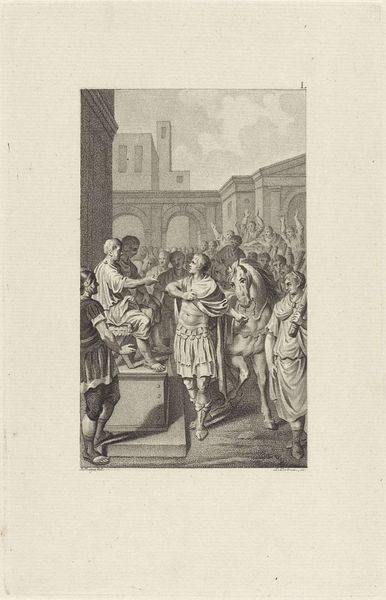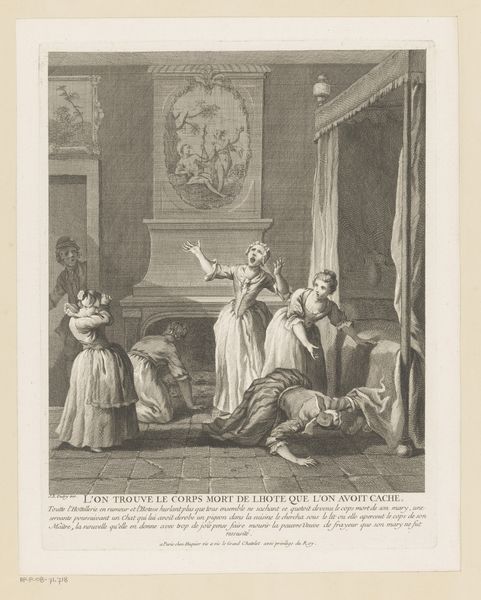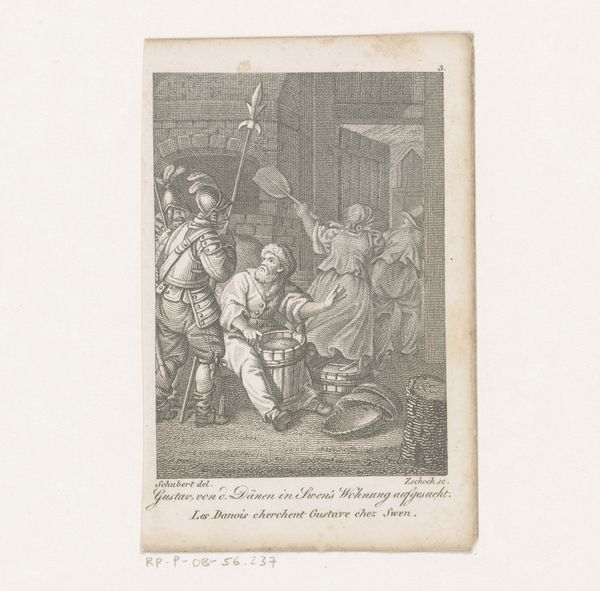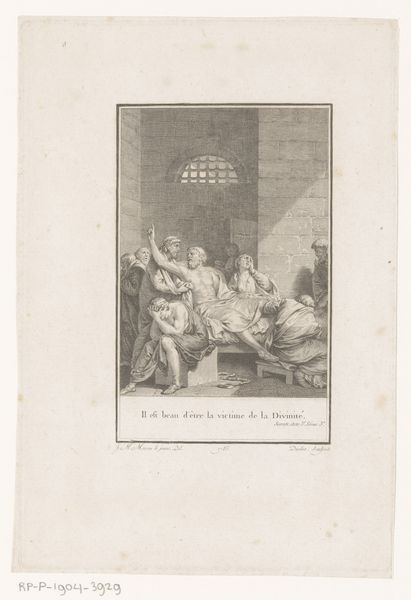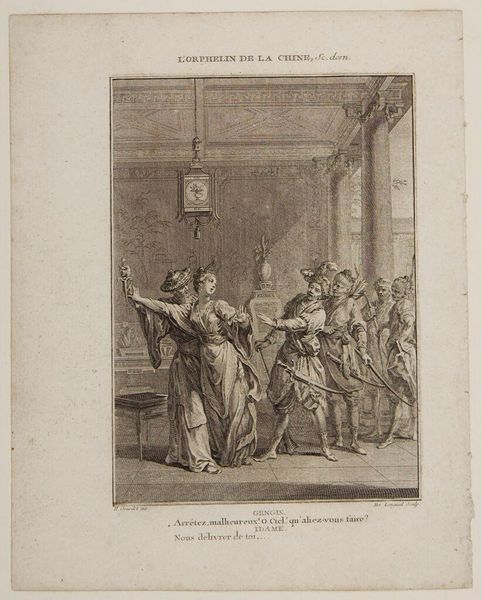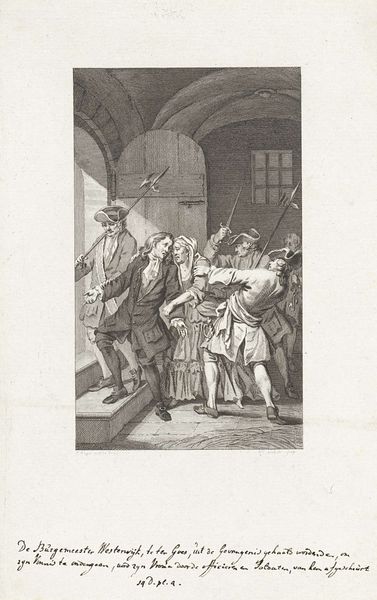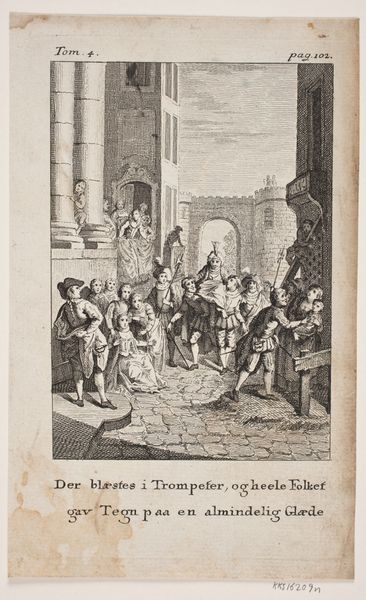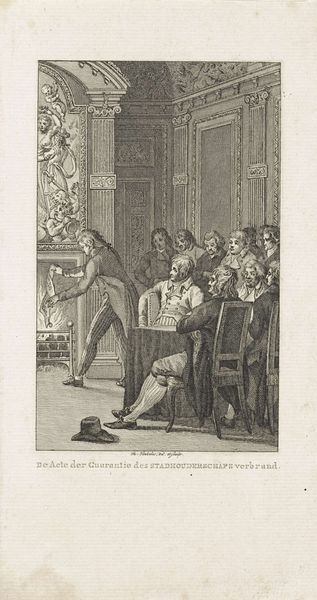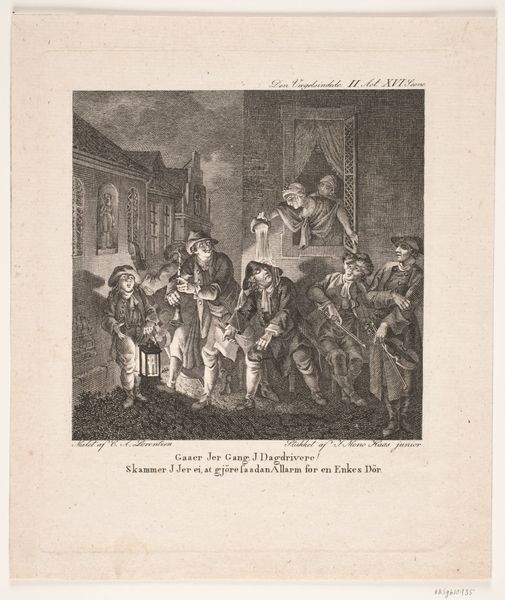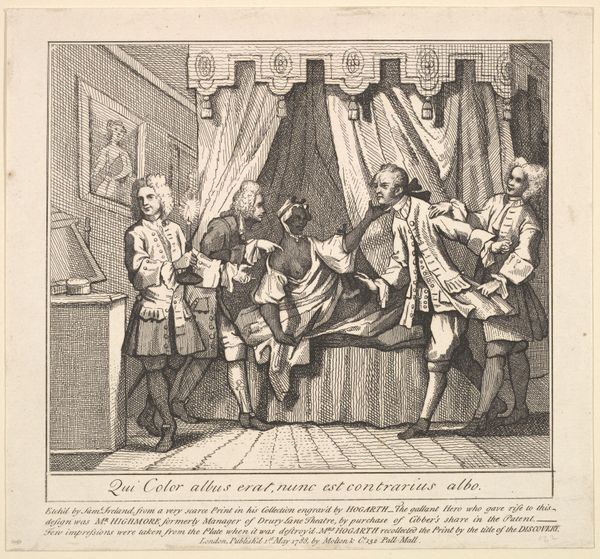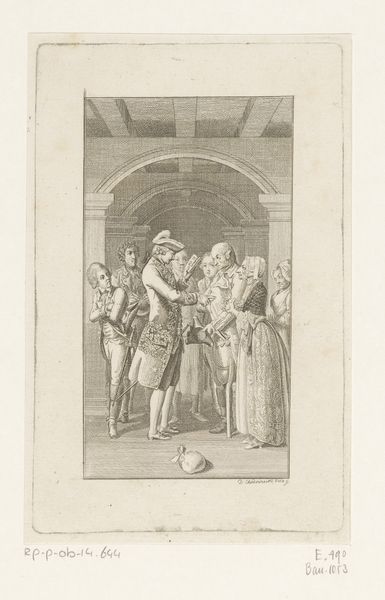
engraving
#
baroque
#
figuration
#
line
#
history-painting
#
engraving
Dimensions: height 369 mm, width 296 mm
Copyright: Rijks Museum: Open Domain
Curator: Let’s turn our attention to Jean-Baptiste Oudry's "Gevecht in de nacht," or "Fight at Night," an engraving dating from the period of 1696 to 1755. Editor: My initial response is a sense of intense chaos, with bodies intertwined and limbs flailing. The single source of light from a candle seems to barely illuminate the turmoil, heightening the drama. Curator: Absolutely. Oudry, although better known for his animal paintings, captures a critical power dynamic. Consider the historical backdrop: Europe was in the throes of numerous sociopolitical upheavals and Oudry’s decision to portray violence is particularly telling. What’s intriguing here is the gendering of power, as women, with expressions of alarm, witness the fight between men, who may be coded figures for rulers or nobles battling for status, territory, or resources. Editor: What catches my eye is the repetition of gestures - those raised arms, the open mouths, mirroring in a way, classical depictions of horror and violence, yet rendered in this very specific baroque sensibility. The architectural setting adds another layer, suggesting the kind of interiors associated with aristocratic or elite spheres, reinforcing ideas about private power struggles bleeding into public discourse. Curator: Precisely. The choice of engraving as a medium itself underscores the desire to circulate such imagery, to make these scenes accessible and, in effect, to encourage public discussion about the very real issues of class and violence that permeated this time. Editor: And there is this dichotomy, isn't it, with baroque style – so often associated with splendor, ornament – being applied to a rather brutal, visceral subject. Perhaps this adds to the reading as a symbol, where all that glitters is a façade? The darkness that fills most of the artwork hints at unspeakable truths bubbling underneath. Curator: That's a valuable insight. I wonder what audiences made of this. The role of such images may have offered a subtle commentary on gender roles, exposing women as largely passive figures but with a privileged seat. Were they being encouraged to intervene? Likely not, but Oudry compels us to examine these power relations critically, revealing the messiness beneath the façade of power. Editor: I am seeing the ways that potent symbolism works here on various levels. Reflecting on our conversation, I will remember to read such a dramatic scene as Oudry's unique attempt to invite a broader, socio-political analysis into his work. Curator: And I now have a renewed appreciation for the work that goes beyond a purely art-historical reading of stylistic traits and expands to the historical-political context during this tumultuous era.
Comments
No comments
Be the first to comment and join the conversation on the ultimate creative platform.
